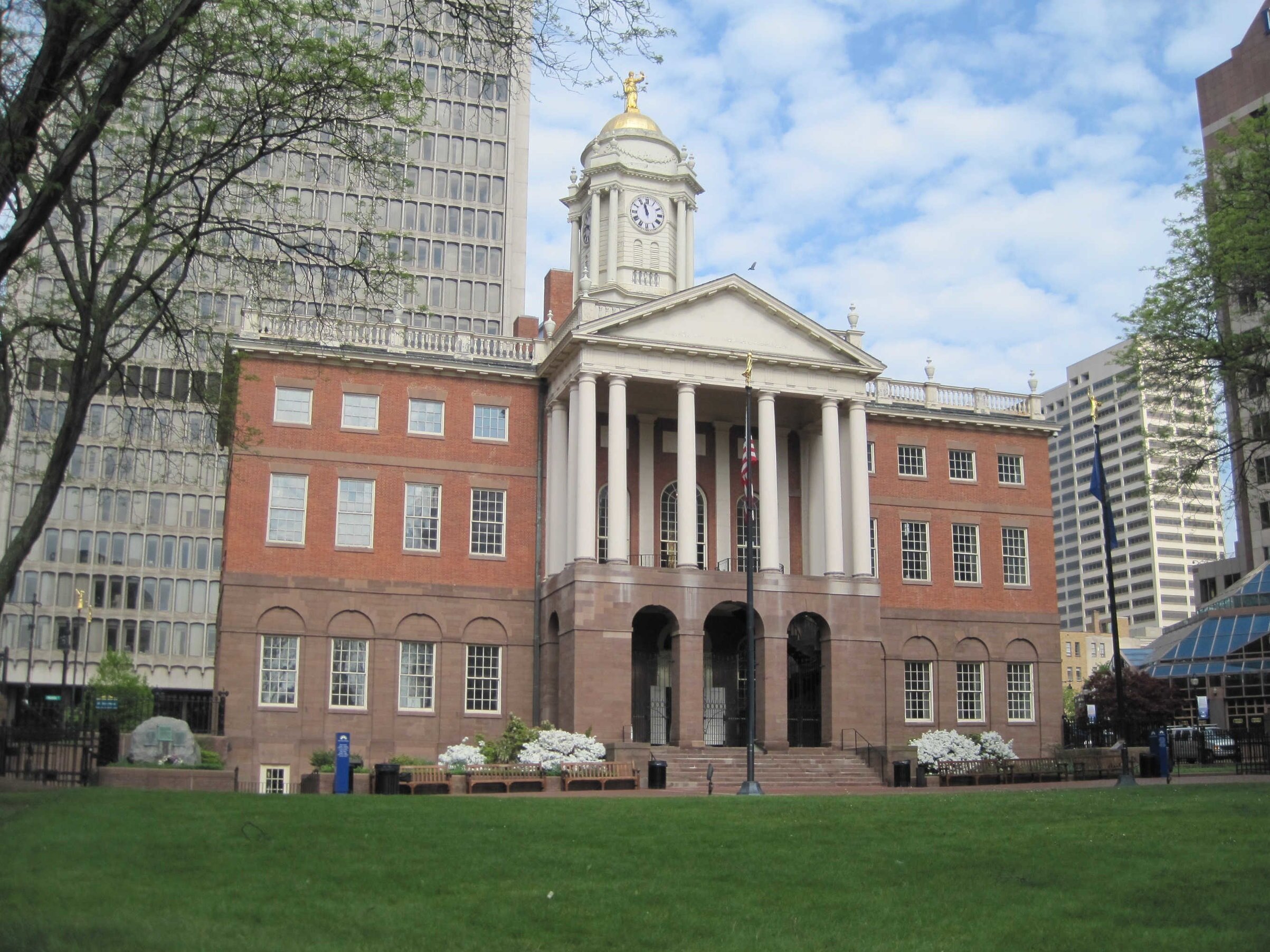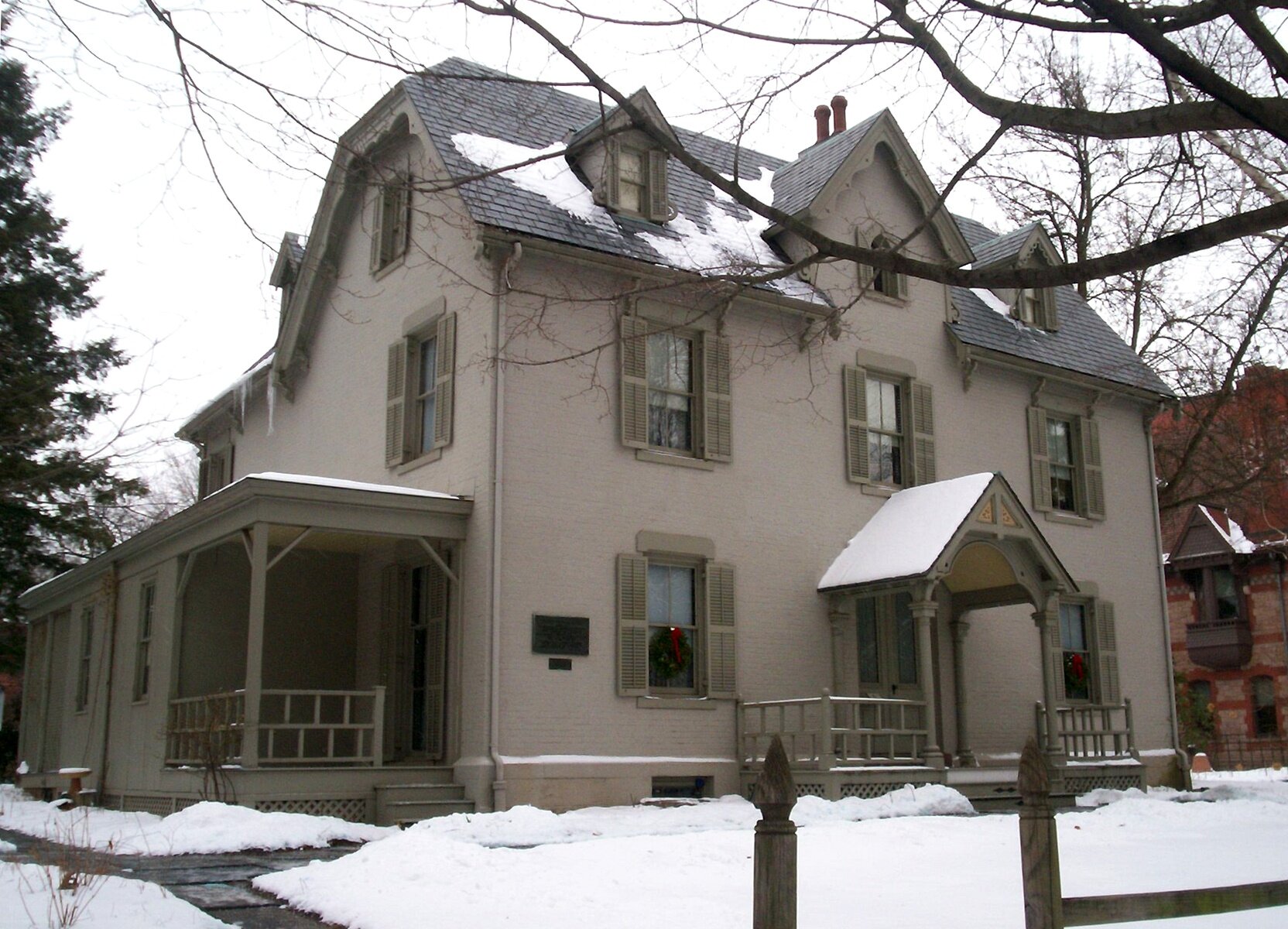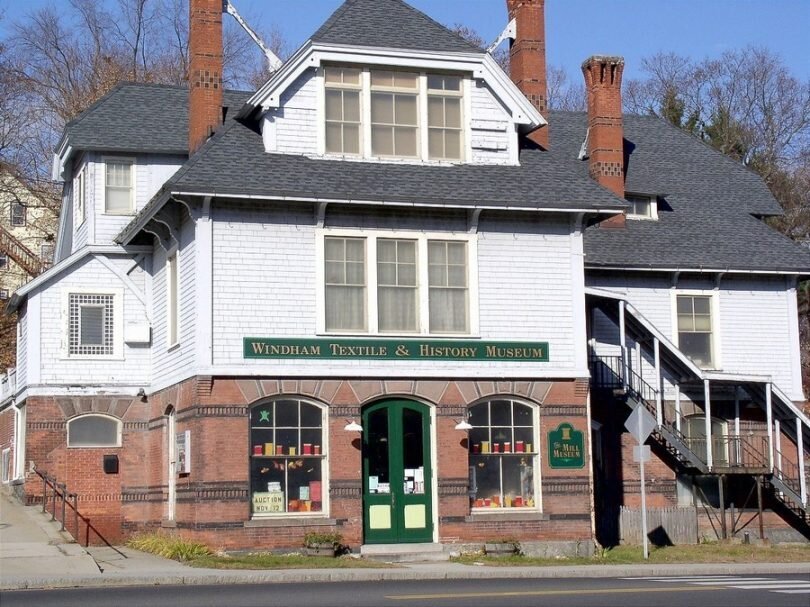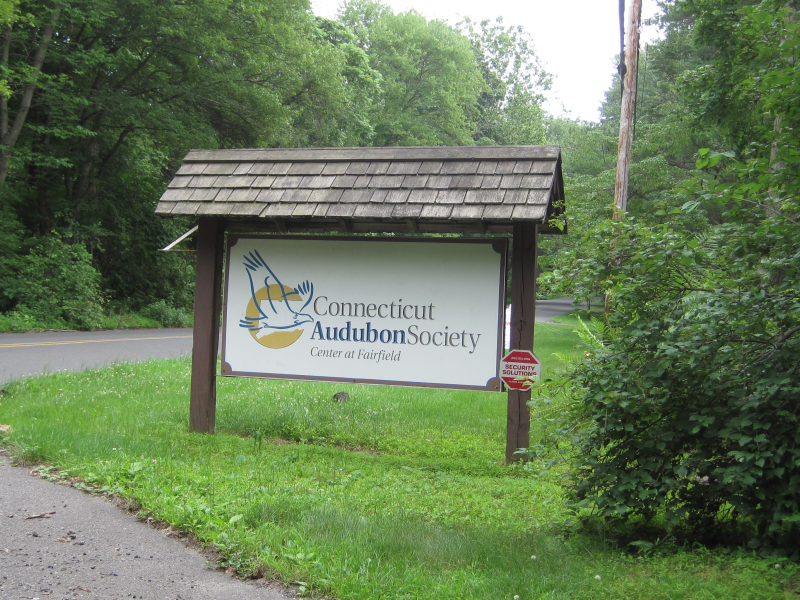The Heritage Trail
Throughout Connecticut’s history, wives, mothers, and daughters maintained homes and businesses, cared for children and the infirm, provided family income, initiated social reform, inspired creative endeavors, achieved artistic brilliance, and sometimes became heroines. Indeed, women’s lives have been filled with rich experiences, and their daily contributions are an invaluable part of our history that has too often been overlooked. Join us on the Connecticut Women’s Heritage Trail, where women’s stories are being recovered, retold, and reinterpreted to educate and inspire new generations of women and girls.
Each Stop Has A Story . . .

The Old State House in the center of Hartford is a great place to start your journey on the Trail. One of the nation's oldest state houses, Connecticut's Old State House was built in 1796 and is listed on the registry of National Historic Landmarks. Guided and self-guided tours focus on the building and the CT citizens who worked to effect change across the state. Through stories told in exhibits, special programs and tours, visitors can find inspiration for civic engagement in their own neighborhoods, towns and the wider world.
Among the Connecticut women whose stories you will learn about during your visit are; Hannah Bunce Watson, publisher of the Connecticut Courant during the Revolution; Prudence Crandall, CT’s state heroine who fought her town and state over the right to operate an 1830s school for African-American women from out of state; Frances Ellen Burr, who urged Connecticut women to storm the Capitol in order to win the vote, and Emily Seymour Goodwin Holcombe, instrumental in saving and preserving the Old State House.
In addition to learning about the important women who made an impact on life in Connecticut, the Old State House offers hands-on and family-friendly activities in the Holcombe Center. The Mortensen Gallery hosts the exciting 6,800-square foot multi-media exhibit History is All Around Us tells the story of Hartford and highlights the importance of history in our lives. The always popular Museum of Curiosities is located on the second floor near the historically restored legislative chambers. Special events are also planned throughout the year so check out the events calendar!
The OLD state House

The Harriet Beecher Stowe Center preserves and interprets Stowe’s Hartford home and the center’s historic collections, promotes vibrant discussion of her life and work, and inspires commitment to social justice and positive change. Harriet Beecher Stowe’s Uncle Tom’s Cabin was a vehicle for her to express the injustice she saw in slavery and to ignite a fire that propelled people to action in the Civil War.
The Stowe Center is part of the Nook Farm complex which was home to Stowe and her influential family including sisters Isabella Beecher Hooker and Catharine Beecher, and great-nieces Charlotte Perkins Gilman and Katharine Seymour Day, who restored the house and founded the Center. The Stowe center strives to connect issues of the past to modern day problems of equality. Programs include The Salons at Stowe, the Stowe Prize, and rotating educational exhibits.
When you visit the Stowe Center, don’t expect a traditional historic house museum! Expect a conversational, interactive tour where you can participate along with your guide. Of course you’ll hear about everything that compelled Stowe to write her most famous novel, Uncle Tom’s Cabin: her childhood, travels, marriage and family, and perhaps greatest of all, her courage. But you’ll also connect the past to the present as you discuss 19th century social issues — such as slavery and the role of women — that resonate today in the form of racism, mass incarceration, immigration or equal pay. You will leave feeling inspired that you can create positive change.
Be sure to include a visit to the nearby Mark Twain House, also rescued from demolition and preserved by Katharine Seymour Day.
The Harriet Beecher Stowe Center

Situated on the crest of a hill in Farmington, the Hillstead House is a magnificent mansion designed by architect Theodate Pope Riddle, one of the first female architects in the United States and daughter of the home’s art collector owner.
The clapboard house Riddle designed was complete with the latest in modern conveniences and, during the first half of the 20th century, Riddle and her parents entertained illustrious guests including prominent writers, academics, artists, and even Presidents.
The Hillstead now houses an impressive Impressionist art collection and boasts a restored sunken garden and majestic views from its 152 acres. The museum also preserves an extensive archive of correspondence, diaries, and household documents. Another of Riddle’s projects, the Avon Old Farms School, can be seen in nearby Avon.
Hill-Stead Museum

The Webb-Deane-Stevens Museum is a collection of four historic homes owned and managed by the National Society of Colonial Dames of America in the State of Connecticut, a preservation society formed by Elizabeth Hart Jarvis Colt in 1893. The properties interpret early American history and the influences of women on the development of social, economic, and political life in Connecticut and the developing United States.
The Webb and Deane Houses provide a glimpse into the world of well-to-do colonial society. Joseph and Abigail Webb entertained extensively and were hosts to high-level meetings between George Washington and the French General Rochambeau. Elizabeth Deane managed her household and entertained guests while her husband Silas was away working as a diplomat and delegate to the Continental Congress. She hosted John Adams for tea in 1774 and George Washington for dinner in 1775.
The Stevens and Buttolph-Williams Houses interpret middle- and working-class family life in the 18th and 19th centuries. The Stevens House offers an intimate connection with everyday life in a household not staffed by servants or slaves but rather worked and managed by women. The second floor is devoted to interpreting the lives of 19th-century children. The Buttolph-Williams House was home to an early 18th-century tavern run by a husband and wife team and now features an impressive collection of 18th-century American decorative arts. It also inspired Elizabeth George Speare’s classic novel The Witch of Blackbird Pond (1958), which remains on many schools’ required reading lists.
Webb-Deane-Stevens Museum

The building housing the Martha A. Parsons House Museum was built in 1782 and intended for the dwelling of parsons (ministers). However, this is not the reason for the current name of the estate. By coincidence, the property was purchased by the Parsons family.
Martha A. Parsons was the first female business executive in Connecticut to earn her position by merit. She was Executive Secretary for the Landers, Frary, and Clark Company in the early part of the 20th-century. Upon her death she bequeathed her family home to the Enfield Historical Society. The museum features many antiques and art that have been there since before Parsons’ death, including the famous George Washington Memorial Wallpaper. The museum is free and open to the public.
Martha Parsons Home

While mill owners’ wives may have thought their lives were worthy of notice, the less affluent women who worked in Willimantic’s textile mills during the Industrial period would never have dreamed that examples of their homes and workplace would be recreated in a museum.
Visitors to the Windham Textile & History Museum experience the contrasts of life in a mill worker’s home and a mill owner’s mansion and tour a recreation of a 19th-century textile mill. The museum also has special exhibits throughout the year.
Museum hours are Friday, Saturday and Sunday, 10:00 am - 4:00pm. Closed January and major holidays.
Windham Textile & History Museum

The Prudence Crandall Museum celebrates the life and work of Prudence Crandall, Connecticut’s official State Heroine. An educator of young women, in 1832 Crandall admitted Sarah Harris, an African American woman, into her academy.
Refusing to be discouraged either by prejudiced townspeople or by a Connecticut law that made her school illegal, Crandall continued her work, fighting her arrest and conviction until she was acquitted. The museum’s exhibits, period rooms, and research library allow visitors to explore Crandall’s courageous work to educate young women of color.
Prudence Crandall Museum

The Thankful Arnold House in Haddam transports visitors back to the early-19th century, helping them to explore the lives of women under the constraints of English Common Law. Because women by law were not allowed to own property, when Thankful’s husband Joseph Arnold died prematurely, she was allotted only a third of her husband’s property and the rest went up for sale.
Luckily, her brother-in-law purchased the property and later sold it to her son, thus keeping the entire property in the family. Thankful Arnold’s “ghost” narrates the visit, telling of her life and the lives of her daughter and granddaughter. Representative of their time, these three generations of women were heads of households in the historic home, built in 1794 and later added onto in 1800 and 1810.
The ThankFul Arnold House

There are many ways to change to world, and the arts are one major way to do so. Florence Griswold nurtured American Impressionist Painting by hosting artists in her home in Old Lyme, making the picturesque town on the Connecticut River a thriving artist colony in the late-19th century.
The Florence Griswold Museum, housed in Griswold’s former home, presents an outstanding collection of American Impressionist Art and preserves Griswold’s legacy as a patron of the arts. From its permanent collections to rotating exhibits and summer art camps, the museum is a preeminent arts destination in Connecticut.
Florence Griswold Museum

The Osborne Homestead Museum is a national historic site where visitors can learn about women’s lives in the early 1900s. The house was originally built in the mid-1800s and was remodeled during the 1920s.
The house and grounds were part of the Frances Osborne Kellogg Estate and the museum honors and celebrates her life. Frances Osborne Kellogg was a conservationist and business woman who made sure the lands were preserved for future generations. The luscious museum grounds are part of the Connecticut Historic Gardens Trail and are open to museum visitors as well.
Osborne Homestead Museum

Mabel Osgood Wright was a pioneer in the field of environmental education. Her nature writing played a major role in raising national consciousness about environmental issues. In 1914, she founded the nation’s first bird sanctuary in Fairfield.
The bird sanctuary is the first songbird refuge in the nation and has been specifically designed to attract various species of birds and butterflies. In addition to the six-acre sanctuary, the site is also home to the Birdcraft Museum, which presents visitors with informational exhibits about Connecticut’s wildlife history through a variety of educational programs and events for all ages.
Birdcraft Museum & Sanctuary

A designated National Historic Landmark, The Lockwood-Mathews Mansion Museum is one of the earliest and most significant Second Empire-style homes built in the United States. The home was built by railroad baron and financier LeGrand Lockwood in the post-Civil War era and presents a remarkable vision of Victorian architecture and furnishings.
After Lockwood’s death, the property was sold to the Mathews family. Twenty-one when her father purchased the property, Florence Mathews grew to love the home very much and entertained extensively in its parlors and gardens. She succeeded in maintaining a full staff, even during the Great Depression. This elegant mansion teaches the visitor not only about the decorative arts and the evolution of domestic technology, but also about the everyday lives of the women above and below the staircase, the wealthy and their servants.
Lockwood-MatThews Mansion Museum

The New Canaan Historical Society’s historic sites and collections offer interesting clues to women’s lives in various eras. The history of the Hanford-Silliman house, once a tavern and boarding house, illustrates a number of essential economic roles that its women played over time: waitress, cook, boarding housekeep, and heiress. The Society’s costume collection, which is regularly interpreted in rotating exhibits, illuminates women’s lives over the decades.
The New Canaan Historical Society/Hanford-Silliman House

The Bush-Holley House in Cos Cob is one of Connecticut’s pre-eminent art sites. Listed on the National Register of Historic Places, the site is among the oldest in Connecticut. In the 1890s, Josephine Holley and her daughter Constant ran a boarding house for writers and Impressionist artists and fostered an artist colony in the village of Cos Cob. John Twachtman and Theodore Robinson were among the many impressionists attracted to the picturesque site to debate ideas and plan groundbreaking works.
However, Holley was not the first remarkable woman to occupy the home. During the Revolutionary War, while her husband was imprisoned for suspected British sympathies, Sarah Bush defended her house and family against attack. Both women’s stories are interpreted in this charming preserved 1730s Saltbox.
The Bush-Holley Historic Site & Visitor Center

Named in honor of one of Connecticut’s most famous residents, the Katharine Hepburn Cultural Arts Center (the Kate) presents a diverse repertoire of cultural and performing arts, provides educational opportunities, and is a lasting legacy for America’s iconic actress. Ms. Hepburn was born in Hartford in 1907 and spent summers with her family in the Old Saybrook borough of Fenwick, a place she referred to as “paradise.” She eventually retired to Fenwick and was a dedicated member of the community, supporting civic projects and conservation until her passing in 2003.
The Katharine Hepburn Museum is located on the first floor of the Kate and features dynamic exhibits that present an authentic view of the rich history and cultural impact of Ms. Hepburn, her family, and her life’s work. As the only museum of its kind, it features letters Ms. Hepburn wrote to her family, costumes and personal wardrobe items, film memorabilia, and some of her awards. Museum programs explore her progressive family and ties to Old Saybrook, as well as her drive and determination to sustain a six decades-long career. To date, Ms. Hepburn continues to hold the record for the most Oscars won for best actress.
